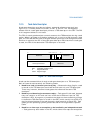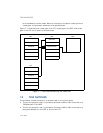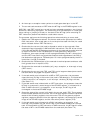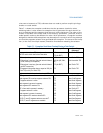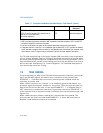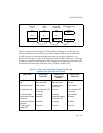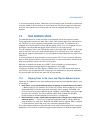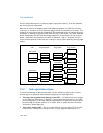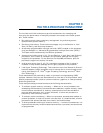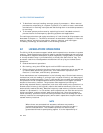
Vol. 3 7-19
TASK MANAGEMENT
In a multiprocessing system, additional synchronization and serialization operations
must be added to this procedure to insure that the TSS and its segment descriptor
are both locked when the previous task link field is changed and the busy flag is
cleared.
7.5 TASK ADDRESS SPACE
The address space for a task consists of the segments that the task can access.
These segments include the code, data, stack, and system segments referenced in
the TSS and any other segments accessed by the task code. The segments are
mapped into the processor’s linear address space, which is in turn mapped into the
processor’s physical address space (either directly or through paging).
The LDT segment field in the TSS can be used to give each task its own LDT. Giving a
task its own LDT allows the task address space to be isolated from other tasks by
placing the segment descriptors for all the segments associated with the task in the
task’s LDT.
It also is possible for several tasks to use the same LDT. This is a memory-efficient
way to allow specific tasks to communicate with or control each other, without drop
-
ping the protection barriers for the entire system.
Because all tasks have access to the GDT, it also is possible to create shared
segments accessed through segment descriptors in this table.
If paging is enabled, the CR3 register (PDBR) field in the TSS allows each task to
have its own set of page tables for mapping linear addresses to physical addresses.
Or, several tasks can share the same set of page tables.
7.5.1 Mapping Tasks to the Linear and Physical Address Spaces
Tasks can be mapped to the linear address space and physical address space in one
of two ways:
• One linear-to-physical address space mapping is shared among all tasks.
— When paging is not enabled, this is the only choice. Without paging, all linear
addresses map to the same physical addresses. When paging is enabled, this
form of linear-to-physical address space mapping is obtained by using one page
directory for all tasks. The linear address space may exceed the available
physical space if demand-paged virtual memory is supported.
• Each task has its own linear address space that is mapped to the physical
address space. — This form of mapping is accomplished by using a different
page directory for each task. Because the PDBR (control register CR3) is loaded
on task switches, each task may have a different page directory.
The linear address spaces of different tasks may map to completely distinct physical
addresses. If the entries of different page directories point to different page tables



